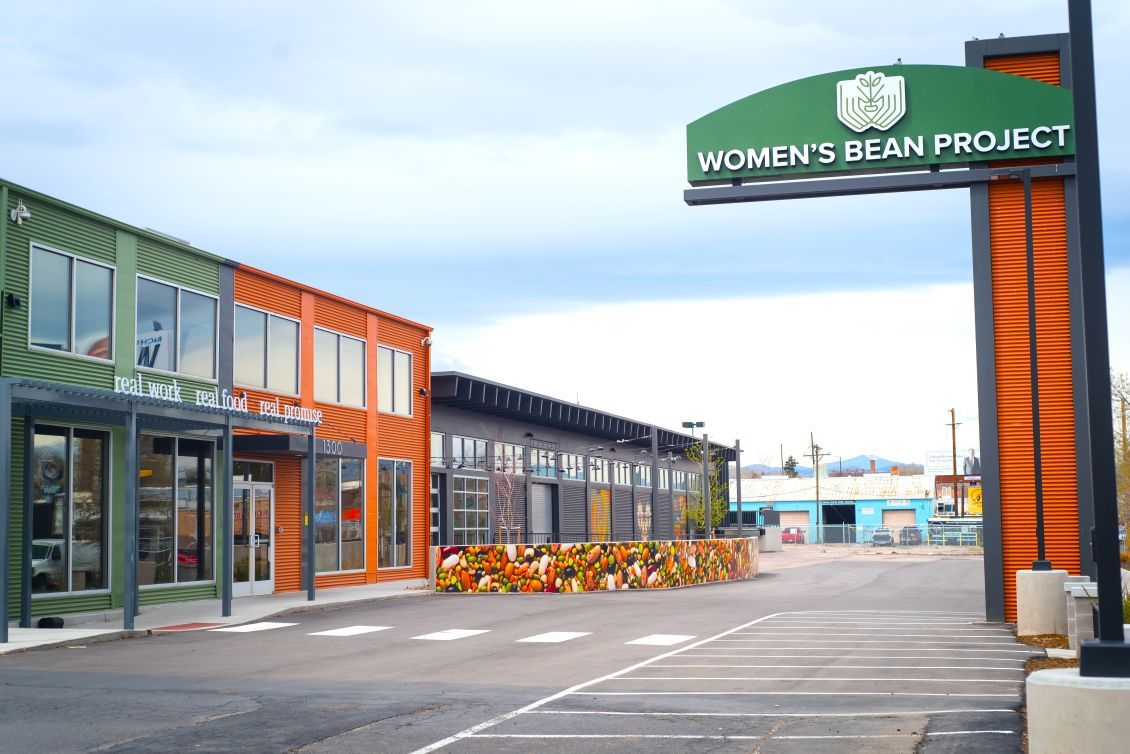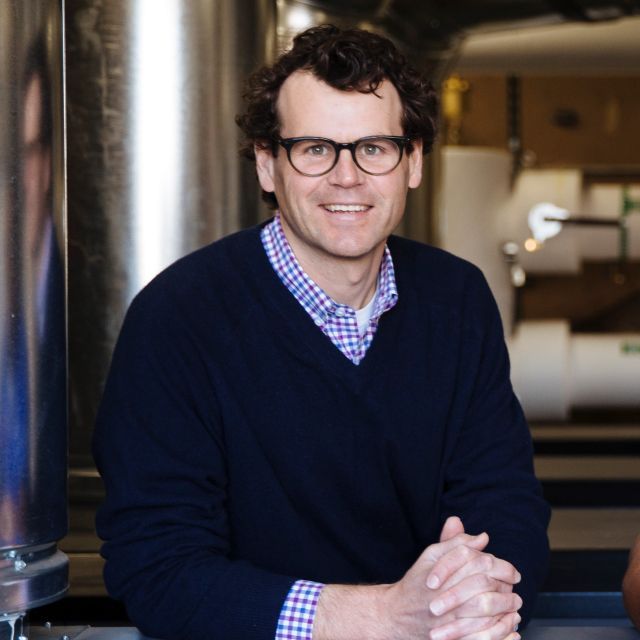Luke Ilderton relies on his engineering skills and more than 15 years in the energy efficiency field to help people be more comfortable, healthy, and financially secure. Ilderton is the executive director of Energy Outreach Colorado, a nonprofit that creates affordable energy solutions through energy bill assistance, solar subscriptions, and energy efficiency updates.
His expertise includes energy assessments and modeling, energy rehabilitation projects, renewable energy projects, and income-qualified energy programs. He has dedicated his career to serving families with lower incomes, and regularly partners with Enterprise and other organizations to improve affordable housing.
A passionate advocate, Ilderton spoke with Enterprise about making systemic changes in his field and how to ensure no family is left behind in the green energy transition.
You joined Energy Outreach Colorado in 2010. How did you get into this field?
I started working in affordable housing and renewable energy about 15 years ago. I realized there were many affordable housing buildings that have been neglected because of a lack of resources.
I got interested in energy improvements with more of a social mission of helping residents be more comfortable, save money on utility bills, and fix operating problems that have been going on for a long time. I got really energized about using my engineering talent in a way that benefited a community.

What is keeping you and your colleagues especially busy these days?
We have all hands on deck figuring out how to electrify affordable housing responsibly and preserve homes without drastically increasing utility bills.
Applying newer technologies to older buildings that have been neglected from a maintenance standpoint is challenging. We need to know how the installs will be designed, how people will engage with those appliances, and how building maintenance staff will maintain them.
It's exciting to be solving problems that maybe we overlooked in the past, with new energy around decarbonizing our built environment and focusing on affordable housing communities. We’ve been able to renew our passion around strategies that can solve problems beyond just replacing gas appliances.
Part of your work focuses on creating systemic changes within the utility environment through programs like modified rate structures. Can you give us an example of your work in this area?
When I started with Energy Outreach Colorado, we made a strong argument that income-qualified customers needed special considerations and funding streams, and different energy efficiency opportunities than market-rate customers.
We are creating a more equitable system within utility offerings, including programs designed for people that reflect their financial constraints, with an understanding that some customers will struggle to facilitate energy efficiency improvements to their home or building all on their own.
You said there is a notable shift in your field toward focusing on vulnerable communities. What are some things people should be aware of when working with families in need?
It’s a huge opportunity, but I’m hearing community residents’ concerns that they are going to be “experimented on” with new technology. We need to be mindful: We are coming into communities as outsiders. We may not value these changes the same way a community values those changes.
There is also the potential to increase vulnerable families’ utility bills if the right approach is not taken. For example, heat pumps may need to be paired with on-site renewables or community solar garden subscriptions that can subsidize increased operating costs. And we need to make sure low-income residents can participate in a utility discount program. We must ensure there are equitable solutions.
What are some of the obstacles you face in your field?
The number one obstacle is the condition of the buildings. Many of the federal agencies that regulate affordable housing do not have the resources to evaluate a building's energy efficiency or health, so issues go unnoticed for years.
Sometimes there are high utility bills because of how equipment is performing, or mechanical systems that are working against each other by heating and cooling at the same time. Then a program like ours comes in, intervenes in building operations, discovers inefficiencies, and rectifies the situation.
The other issue is the attention and resources needed to develop new affordable housing can distract housing organizations from the needs of their existing buildings.
We look at how we can support housing providers, improve their existing building stock, and add benefits. We take pressure off around design requirements, income verification requirements, property engineering, architecture support, and managing the timelines of various funding sources and their compliance requirements. We support them in a way that really accelerates their work.
What is an example of impact you’ve seen through your work?
It brings me back to when I started at Energy Outreach – the neglected maintenance of buildings and their impact on tenants. The first affordable housing job I worked on had a boiler leaking five gallons of water a day. That was impacting the residents – availability of hot water, the moisture and mold in their home, etc.
With an energy retrofit program, you can address those issues and correct them. And even though we’re starting with an energy efficiency service, you can impact residents’ health and preserve greatly needed affordable housing.
This is an opportunity to address a lot of indoor air issues we’ve seen in many homes and buildings. For example, through our Healthy Homes program in Denver, we partner with hospitals to refer families struggling with chronic respiratory issues and work to improve a home’s performance. The health of homes and buildings is not just about greater energy savings.
You mentioned that energy efficiency professionals often want to retrofit an entire home or building, but that is not always realistic with affordable housing. How can communities best be served?
We’re trying to champion greater accessibly options for income-qualified households and make sure there are options that fit all households’ needs – people who may be busy or their work schedules don’t allow them to undertake an extensive weatherization process. But they can access a program that replaces their appliances and lighting.
We need accessible pathways to subsidize some of their energy improvement needs . There are many barriers holding households back. I’m excited to see the opportunities for that a-la-carte system of what is needed in a home now.
With the energy transition, there is a huge opportunity to ensure that frontline communities and people who have suffered from environmental injustice are prioritized.
Vesna Jaksic Lowe is an award-winning journalist. This profile is part of our series, The Resilient 7, celebrating leaders building a more sustainable future. Read more articles from the series:
- Bomee Jung: Helping Housers Build Resilient Homes
- Oji Alexander: Building Wealth and Resilience through Homeownership
- Gina Ciganik: Deploying Science to Create Healthier Buildings
- Joseph Kunkel: Advancing Resilience Through Holistic Design in Indian Country
- Anne Evens: How Clean Energy Drives Climate and Racial Justice
- Monica Mejia: Going All Electric on L.A.'s Eastside
Learn how Enterprise is making sure no community is left behind in the green energy transition.

